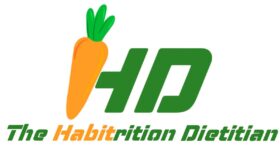February is Heart Month and since 9 out of 10 Canadians have at least 1 risk factor related to heart and vascular disease, we should talk about it.
High cholesterol is one of these factors, more specifically, LDL cholesterol. Here are 5 ways to help lower your cholesterol using nutrition, and one bonus tip at the end!
Before reading further though, remember: it’s not about being perfect, it’s about making progress.
You don’t have to do all of these things all at once. If you are living with high cholesterol, these habits can have a cumulative effect; meaning even one of them will be beneficial, two will be more beneficial, and so on.
It may also be beneficial to let your doctor know that you’re going to add these habits into your current lifestyle.
Ok, let’s dive in…
1
Limit intake of saturated fat
Saturated fat is a type of fat typically described as being solid at room temperature. They are found in both animal-based foods and some plant-based oils, like coconut and palm.
In animal-based foods, higher contents are found in fatty beef, chicken with the skin on, butter and lard, and cheese/milk that is high in fat.
Too much saturated fat in the diet can increase our LDL cholesterol (sometimes known as the “bad cholesterol”).
If like these foods and enjoy them as part of your diet, here is what to look for when trying to lower our intake of saturated fats (and thus, cholesterol), choose:
- Lean or extra lean meat cuts
- Chicken without the skin
- Low fat milk (skim or 1% milk fat (MF))
- Low fat yogurt (0 or 1% MF)
- Cheese under 20% MF
2
Eat more foods with “healthy” fats (especially omega-3s !)
Now that we’re limiting saturated fat from the tip above, here’s how to get more healthy fats.
Fish like salmon, sardines, and tuna, each have amazing nutrient profiles. Aim to eat fish once or twice a week.
Nuts (like walnuts, pecans, or cashews) and seeds like (pumpkin, chia, and flax) are LOADED with nutrients, including healthy fats, fibre, and essential vitamins and minerals. Try adding these as toppings to your dinners or mixed in with my favourite, Greek yogurt.
Last one for this topic, more often than not, choose extra virgin olive oil when cooking instead of butter.
The next 3 habits are adapted from the Portfolio Diet, a diet specifically designed to help lower cholesterol levels. If followed, over time, these three habits could lower your cholesterol 5-10% each! That’s up to 30%!
3
Eat 45 grams of nuts each day (about a handful)
As mentioned above, nuts have an incredible nutrient profile to them. Try getting 45 grams of nuts each day, which is about a handful.
4
Eat more viscous fibre
In general, it is recommended to aim for at least 20-30 grams of fibre each day. When it comes to lowering cholesterol levels though, there is one type in particular to pay attention to.
There are two main types of fibre; soluble and insoluble. Soluble fibre (the viscous stuff) turns into a gel-like texture when wet (try adding a few tbsps of water to 1 tbsp of chia seeds in a bowl…a few minutes later you will have a liquid with the consistency of an egg!).
Another visualization method to use to help increase your fibre intake is to try having half your plate as fruits and vegetables. Similar to the Canada Food Guide pictured below:

Another important thing to consider with fibre is that variety is good. Try adding different foods to reap the most health benefits.
Here are some examples:
- Blackberries or raspberries – 8 grams per cup
- Chia seeds – 5 grams per tbsp
- Avocado – 5 grams per ½ medium avocado
- Apples – 4.5 grams per medium apple
- Edamame – 4 grams per ½ cup
- Lentils – 4 grams per ¼ cup
- Oatmeal – 4 grams per ⅓ cup
- Pumpkin seeds – 3 grams per ¼ cup
5
Eat more plant protein
Technically, the recommendation for plant protein and lower cholesterol is to eat 50 grams of plant protein per day. But this can be pretty hard to do.
Start by trying to get 25 grams per day and slowly increase your intake over time.
Here are some good sources:
- Shelled edamame – 9 grams per ½ cup
- Extra-firm tofu – 14 grams per 85 grams
- Soy beverage – 7 grams per cup (swap this in place of cow’s milk)
- Chickpeas – 7 grams per ½ cup
These foods are also high in fibre so give your gut time to adjust!
BONUS TIP: Exercise!
As much as I love talking about nutrition, exercise plays such an important role in our health. Exercising can also help us lower our cholesterol levels.
Given that this month is Heart Month, and my background in kinesiology, I know that exercise is a powerful medicine (there is even a website dedicated to this idea: Exercise is Medicine).
Here are the recommended levels:

Thank you for reading! If you found this blog to be of value, interesting, or helpful at all, please share on your social medias 🙂
To learn more about changing your eating habits, check out this blog and start building healthy habits today.
If you want to support the blog, you can do so at this link: Buy me a coffee (or two) ☕



